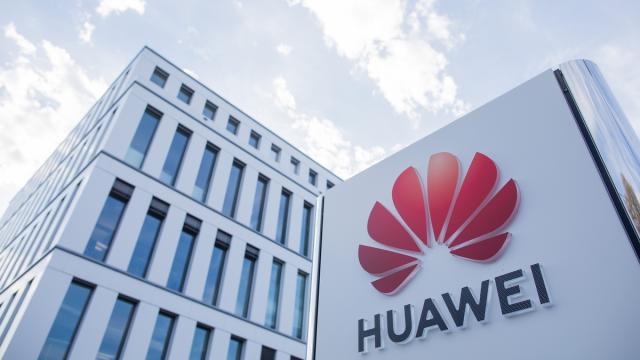After months of political turmoil, one major U.S. company is getting a reprieve from President Donald Trump’s bans.
Microsoft revealed to Reuters on November 21 it had been granted an indefinite licence to work with Huawei after the Chinese telco giant had been prevented from working with U.S. companies back in May 2019.
[referenced url=”https://gizmodo.com.au/2019/09/huawei-confirms-google-apps-wont-be-available-on-mate-30/” thumb=”https://gizmodo.com.au/wp-content/uploads/2019/09/huaweilogo-410×231.jpg” title=”Huawei Confirms Google Apps Won’t Be Available On Mate 30″ excerpt=”Huawei has confirmed at the 2019 IFA conference in Berlin that although the Mate 30 series will come with Android 10 pre-installed, the devices will not host any Google apps when the phone launches on September 19. Google previously confirmed the app exclusion after months of turmoil amid US President Trump’s allegations of Huawei infrastructure being used to spy on citizens, resulting in a ban on US companies (like Google) working with Chinese companies (like Huawei).”]
“On Nov. 20, the U.S. Department of Commerce granted Microsoft’s request for a license to export mass-market software to Huawei,” Microsoft said in a statement to Reuters. “We appreciate the department’s action in response to our request.”
Reuters understand that the approved licenses were for the sales of cellphone components and non-electronic components but specific products weren’t outlined.
The bans were first announced in May 2019 when President Trump issued an executive order effectively halting U.S. companies from working with the Huawei and a number of other Chinese companies. The order outlined foreign-owned companies were “creating and exploiting vulnerabilities… in order to commit malicious cyber-enabled actions, including economic and industrial espionage against the United States and its people.” Because of this, U.S. companies, like Google, Apple and Microsoft, would not be allowed to work with any companies included on the blacklist, like Huawei.
It also stated a review would take place in May 2020 to ensure the measures “are sufficient and continue to be necessary to mitigate the risks identified in, and pursuant to, this order.”
Since then, President Trump has publicly pivoted on the order, promising to ease restrictions and granting certain companies temporary 90 day licences. But otherwise, nothing has really budged until now.
The bans naturally had a flow-on effect to upcoming Huawei products and its Mate 30 series was the first real victim of it. Despite some hopes the Mate 30 series would be spared from the political handball, Google and Huawei both confirmed it would be released without access to Google’s Android ecosystem. Huawei would instead use Android Open Source to make its own running system, EMUI10, and create its own apps in Google’s stead.
“We will continue to use the Android OS and ecosystem if the U.S. government allows us to do so,” a Huawei spokesperson told Lifehacker Australia in September.
“Otherwise, we will continue to develop our own operating system and ecosystem.”
[referenced url=”https://gizmodo.com.au/2019/11/huawei-mate-30-price-specs-release-australia/” thumb=”https://gizmodo.com.au/wp-content/uploads/2019/11/what-the-fuck-410×231.jpg” title=”Huawei Just Announced The Most Cooked Australian Phone Launch” excerpt=”Two months after its global launch, Huawei has finally announced the Mate 30 Pro for Australia. But this isn’t like any other ‘launch’ we have ever witnessed before. Only a handful customers will get the device and they have to register their interest first. This includes 200 words on their favourite Huawei feature, favourite memory with a Huawei device and what excites them most about the Mate 30. All for a phone that won’t include any Google apps of services.”]
The Mate 30 Pro, not the regular Mate 30, had a limited release in November 21 via a strange competition process that required people to go into the running to win the privilege of buying one of the devices.
It’s not clear whether Google would also get its ban on working with Huawei lifted, but it declined commenting on the matter to Reuters. So, for now, Huawei purgatory continues.
[referenced url=”https://gizmodo.com.au/2019/10/huawei-reports-healthy-sales-growth-despite-us-export-ban/” thumb=”https://i.kinja-img.com/gawker-media/image/upload/t_ku-large/rsd8rhhqbhira8ahcluk.jpg” title=”Huawei Reports Healthy Sales Growth Despite U.S. Export Ban” excerpt=”Huawei is reporting healthy sales growth, despite U.S. bans against the Chinese-based tech giant, according to a company statement released on Wednesday. Huawei saw revenue increase 24.4 per cent for the last three quarters of the fiscal year, a financial success that is sure to frustrate the U.S. government.”]
